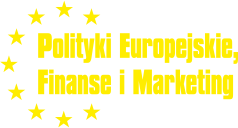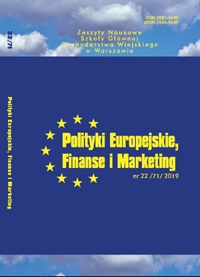Main Article Content
Article Details
Aragie E., Diao X., Robinson S., Rosenbach G., Spielman D. J., Thurlow J. (2021). Assessing the economywide impacts of COVID-19 on Rwanda’s economy, agri-food system, and poverty: a social accounting matrix (SAM) multiplier approach (Vol. 1). Intl Food Policy Res Inst.Atkeson A.: What Will Be the Economic Impact of COVID-19 in the US? Rough Estimates of Disease Scenarios, NBER working paper series, Working Paper 26867, National Bureau of Economic Research Massachusetts Avenue Cambridge, MA, 2020. https://doi.org/10.2499/p15738coll2.134400
Arndt C., Davies R., Gabriel S., Harris L., Makrelov K., Robinson S., Levy S., Simbanegavi W., Seventer D. van, Anderson, L. (2020). Covid-19 lockdowns, income distribution, and food security: An analysis for South Africa. Global food security, 26, 100410. https://doi.org/10.1016/j.gfs.2020.100410
Bagozzi R.P., Mari S., Oklevik O., Xie C. (2022). Responses of the public towards the government in times of crisis. British Journal of Social Psychology, 62(1), 359-392. https://doi.org/10.1111/bjso.12566
Betho, R., Chelengo, M., Jones, S., Keller, M., Mussagy, I. H., van Seventer, D., & Tarp, F. (2022). The macroeconomic impact of COVID‐19 in Mozambique: A social accounting matrix approach. Journal of International Development, 34(4), p. 823-860. https://doi.org/10.1002/jid.3601
Boratyński J. (2005). SNA Based Model of Income Distribution. [In:] W. Welfe, P. Wdowiński (eds). Modeling Economies in Transition. AMFET, Łódź, 45-70.
Burkowski E., Kim J. (2018). Flow-of-funds analysis in the Brazilian economy (2004-2014) (No. 696). Institute of Developing Economies, Japan External Trade Organization (JETRO).
Bustamante-Ayala L. M., Angeles Castro G., Teran-Vargas J. (2022). The financial sector structure and performance and its impact on the Mexican economy: a perspective from the Financial Social Accounting Matrix. Applied Economics, 54(46), 5305-5319. https://doi.org/10.1080/00036846.2022.2042479
Christensen T., Lægreid P. (2020). Balancing governance capacity and legitimacy: how the Norwegian government handled the COVID‐19 crisis as a high performer. Public Administration Review, 80(5), 774-779. https://doi.org/10.1111/puar.13241
Diao X., Aung N., Lwin W.Y., Zone P.P., Nyunt K.M., Thurlow J. (2020). Assessing the impacts of COVID-19 on Myanmar’s economy: A Social Accounting Matrix (SAM) multiplier approach (Vol. 1). International Food Policy Research Institute, Washington.
European Commission (2013). Eurostat, European system of accounts – ESA 2010, Publications Office, https://data.europa.eu/doi/10.2785/16644 [accessed: 3-11-2022].
European Commission, International Monetary Fund, OECED, United Nations, World Bank (2009). System of National Accounts 2008, New York, https://unstats.un.org/unsd/nationalaccount/docs/sna2008.pdf [accessed: 3-11-2022].
Eurostat (2022a) GDP and main components (output, expenditure and income), https://ec.europa.eu/eurostat/databrowser/view/nama_10_gdp/default/table?lang=en [accessed: 22.09.2022].
Eurostat (2022b). General government expenditure by function (COFOG), https://ec.europa.eu/eurostat/databrowser/view/gov_10a_exp/default/table?lang=en [accessed: 22.09.2022].
Fiscal Monitor Database of Country Fiscal Measures in Response to the COVID-19 Pandemic, (2021), https://www.imf.org/en/Topics/imf-and-covid19/Fiscal-Policies-Database-in-Response-to-COVID-19 . [accessed: 03.11.2022].
Hale T., Angrist N., Goldszmidt R., Kira B., Petherick A., Phillips T., Webster S., Cameron-Blake E., Hallas L., Majumdar S., Tatlow H. (2021). A global panel database of pandemic policies (Oxford COVID-19 Government Response Tracker). Nature Human Behaviour, 5, 529–538. https://doi.org/10.1038/s41562-021-01079-8
Instytut Finansów, (2022) Rola państwa w kreowaniu rozwoju. Reakcja na kryzys pandemiczny COVID-19, Raport 1/22, Warszawa.
König M., Winkler A. (2021). The impact of government responses to the COVID-19 pandemic on GDP growth: Does strategy matter?. PloS one, 16(11), e0259362. https://doi.org/10.1371/journal.pone.0259362
Ladi S., Tsarouhas D. (2020). EU economic governance and Covid-19: policy learning and windows of opportunity. Journal of European Integration, 42(8), 1041-1056. https://doi.org/10.1080/07036337.2020.1852231
Laursen, T., Gradzewicz, M., Griffin, P., Żółkiewski, Z. (2004). An empirical recursive-dynamic general equilibrium model of Poland’s economy. Mimeo. World Bank, NBP, Warszawa.
Li J. (2008). The financial social accounting matrix for China, 2002, and its application to a multiplier analysis/ University Library of Munich, Munich, Germany.
Martin A., Markhvida M., Hallegatte S., Walsh, B. (2020). Socio-economic impacts of COVID-19 on household consumption and poverty. Economics of disasters and climate change, 4(3), 453-479.
McKibbin W., Fernando R. (2020). The economic impact of COVID-19. [In:] R. Baldwin, B. Weder di Mauro (eds), Economics in the time of COVID-19. CEPR Press, London, 59-72.
Miller R.E., Blair P.D. (2009). Input-output analysis: foundations and extensions. Cambridge University Press, Cambridge.
OECD (2020). Evaluating the initial impact of COVID-19 containment measures on economic activity. OECD Economic Outlook, Volume 2020 Issue 1.
Okuma R. (2013). Sectoral interlinkages in balance sheet approach. Bank for International Settlements, 36, 387-404.
Pereirinha J.A.C., Pereira E. (2021). Social resilience and welfare systems under COVID-19: A European comparative perspective. Global Social Policy, 21(3), 569-594. https://doi.org/10.1177/14680181211012946.
Picek O. (2020). Spillover effects from next generation EU. Intereconomics, 55(5), 325-331 https://doi.org/10.1007/s10272-020-0923-z
Pyatt G. (2001). Some early multiplier models of the relationship between income distribution and production structure. Economic Systems Research, 13(2), 139-163.
https://doi.org/10.1080/09537320120052434
Tomaszewicz Ł. (2001). Macierz Rachunków Narodowych i jej wykorzystanie w analizach ekonomicznych, Akademia Ekonowmiczna w Krakowie, Kraków.
Tomaszewicz Ł., Trębska J. (2017). Finansowe modele input-output w analizie powiązań międzysektorowych. Studia Ekonomiczne, 1,7-26.
Trębska J. (2018). Polish households’ savings in the financial intersectoral linkages. Equilibrium. Quarterly Journal of Economics and Economic Policy, 13(2), 307-329. https://doi.org/10.24136/eq.2018.016
Tsujimura, K., Mizoshita, M. (2004). Compilation and application of asset-liability matrices: A flow-of-funds analysis of the Japanese economy 1954-1999. Keio Economic Observatory Discussion Paper, 93, 30-31.
Tsujimura K., Mizoshita M. (2003). Asset-liability-matrix analysis derived from the flow-of-funds accounts: the bank of Japan's quantitative monetary policy examined. Economic Systems Research, 15(1), 51-67. https://doi.org/10.1080/0953531032000056936
Zamfir I.C., Iordache A.M.M. (2022). The influences of covid-19 pandemic on macroeconomic indexes for European countries. Applied Economics, 54(39), 4519-4531. https://doi.org/10.1080/00036846.2022.2031858
Downloads
- Marlena Grzelczak, Agnieszka Kurdyś-Kujawska, Michał Soliwoda, RESILIENCE IN AGRICULTURE: IS THERE THEORETICAL AND METHODOLOGICAL CHAOS? , The Scientific Journal European Policies, Finance and Marketing: No. 29(78) (2023)
You may also start an advanced similarity search for this article.

This work is licensed under a Creative Commons Attribution-NonCommercial 4.0 International License.
All articles published in European Policies, Finance and Marketing are fully open access. In this way, the scientific research results contained in articles published in our journal are available to every reader free of charge - in accordance with the CC BY-NC license (https://creativecommons.org/licenses/by-nc/4.0/).
According to the CC BY-NC license you are free to:
- Share — copy and redistribute the material in any medium or format
- Adapt — remix, transform, and build upon the material
The licensor cannot revoke these freedoms as long as you follow the license terms.
Under the following terms:
- Attribution — You must give appropriate credit , provide a link to the license, and indicate if changes were made . You may do so in any reasonable manner, but not in any way that suggests the licensor endorses you or your use.
- NonCommercial — You may not use the material for commercial purposes .
- No additional restrictions — You may not apply legal terms or technological measures that legally restrict others from doing anything the license permits.
Source: https://creativecommons.org/licenses/by-nc/4.0/deed.en
According to that, the authors retain the copyright and full publishing rights.





